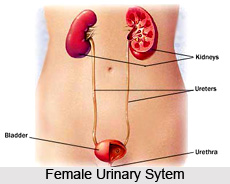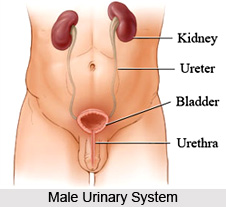 The urinary system of the human body includes the kidneys, bladder and tubes. These organs control the amount of water and salts that are absorbed back into the blood and what is given out as waste. This system also acts as a filtering mechanism for the blood. The complete activity of the urinary system can be improved naturally by practising certain yoga asanas regularly.
The urinary system of the human body includes the kidneys, bladder and tubes. These organs control the amount of water and salts that are absorbed back into the blood and what is given out as waste. This system also acts as a filtering mechanism for the blood. The complete activity of the urinary system can be improved naturally by practising certain yoga asanas regularly.
While the body is functioning, it produces two important substances called uric acid and urea. It is necessary for the human organism not to retain these substances beyond a particular limit, otherwise they lead to trouble. The work of duly driving out uric acid and urea is done by the kidneys. They excrete a fluid called urine in which these substances are in soluble state. The kidneys are situated in the back side of the abdomen. Each of them has a tube called the ureter that connects the kidneys it to the bladder which is a muscular bag situated in the pelvis. Urine is secreted drop by drop and trickling down the ureters and is collected in the bladder. With urine both uric acid and urea are excreted. Failure of the urinary system to function satisfactorily leads to the accumulation of the uric acid and urea in the system causing different disorders therein.
Impact of yoga asanas on human body has been seen to be positive and without any side effects for ages. The Vajrasana improves the urinary system considerably. The asana is associated with the genito-urinary system, which also regulates the sexual energy in the body. Therefore these are quite beneficial for the reproductive as well as digestive organs and are reasonably easy to perform. The spinal twisting asanas are believed to be the calming postures that are an important series of asanas for spinal health and urinary region.
 Every asana programme should include at least one from this group, preferably following the forward and backward bending postures. These have a strong influence on the abdominal muscles, alternately stretching and compressing them as the body twists from one direction to the other. Most of the spinal twists improve the pranic flow around the navel. This feeds organs such as the pancreas, kidneys, stomach, small intestines, liver and gall bladder, relieves associated disorders and rejuvenates the tissues in general. These asanas therefore have a strong effect on total health and vitality.
Every asana programme should include at least one from this group, preferably following the forward and backward bending postures. These have a strong influence on the abdominal muscles, alternately stretching and compressing them as the body twists from one direction to the other. Most of the spinal twists improve the pranic flow around the navel. This feeds organs such as the pancreas, kidneys, stomach, small intestines, liver and gall bladder, relieves associated disorders and rejuvenates the tissues in general. These asanas therefore have a strong effect on total health and vitality.
While the body is in inverted asana, the breath becomes slow and deep, maximising the exchange of carbon dioxide, generally encouraging correct respiration. In addition, the abdominal organs like liver, spleen, stomach, kidneys and pancreas, receive a powerful message helping them to perform their functions more effectively.
The standing asanas bring strength to the body. This series of yoga poses has a stretching and strengthening effect on the back, shoulders and leg muscles, thus firming the organs of urinary system. They are specifically useful for those who spend a lot of time sitting down or who have stiffness or pain in the back. They improve posture, balance and muscles used to keep the back straight during meditation and increase oxygenation and lung capacity. The backward bending yoga asanas again make the body calm and prevent any urinary disorder. They are stimulating and invigorating. They stretch the abdominal muscles and the muscles controlling the spine, helping prevent slipped disc and other back conditions. The spinal nerves, which emerge from between the adjoining vertebrae, are also toned; these nerves give energy to all the other nerves, organs and muscles in the body. These asanas help to circulate, purify and enrich the blood in the urinary region. Backward bending asanas create a negative pressure in the abdomen and pelvis, helping neuro-circulatory toning of all the related organs.
 They also massage the abdomen and pelvic organs by stretching the muscles in this area, especially the rectus abdomen.
They also massage the abdomen and pelvic organs by stretching the muscles in this area, especially the rectus abdomen.
The forward bending asanas use gravity to help release tension and pain in the lower portion of the body. Such yoga pose further loosen up the back, maintaining good health and increasing vitality. These practices move the spine into position known as the primary curve, the shape it takes in the womb. During forward bending asanas each vertebra is separated, stimulating the nerves, improving circulation around the spine and nourishing the spinal cord. This has an impact on the urinary organs of the body. Most forward bending asanas start by bending from the hips and not the waist. Bending from the hips gives greater flexibility of movement and keeps the urinary organs at its best.
The urinary system not only forms an indispensable part of the human body system but also executes the ultimate function of the digestive system. Regular practice of asanas prevents any disorder in the urinary organs and the prevailing ailments can also be checked to a great extent.



